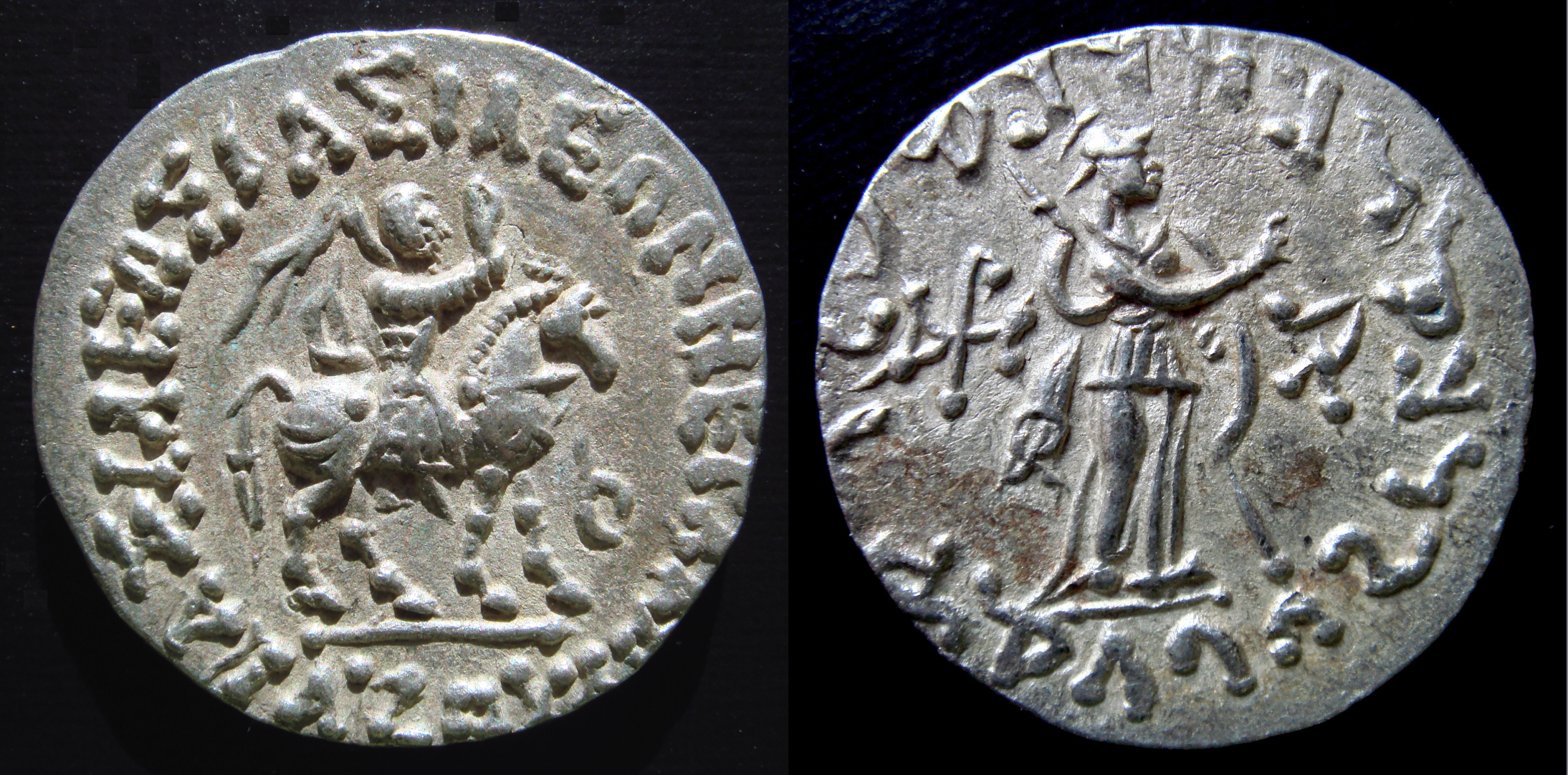- Azes II
Infobox Monarch
name =Azes II
title =Indo-Scythian king
caption =Azes II in armour, riding a horse, on one of his silvertetradrachm s, minted inGandhara .
reign =Indo-Scythians : 35 BC - 12 BC
coronation =
othertitles =
full name =
predecessor =Azilises
successor =Zeionises /Kharahostes
suc-type =
heir =
queen =
consort =
spouse 1 =
spouse 2 =
spouse 3 =
spouse 4 =
spouse 5 =
spouse 6 =
issue =
royal house =
dynasty =
royal anthem =
father =
mother =
date of birth =
place of birth =
date of death =
place of death =
date of burial =
place of burial =|Azes II (reigned circa 35-12 BCE), was an
Indo-Scythian king who completed the rule of the Scythians in northernIndia .Decline of the Scythians
After the death of Azes II, the rule of the Indo-Scythians in northwestern India finally crumbled with the conquest of the
Kushans , one of the five tribes of theYuezhi who had lived in Bactria for more than a century, and who were then expanding into India to create a Kushan Empire.Soon after, the
Parthians invaded from the west. Their leaderGondophares temporarily displaced theKushans and founded theIndo-Parthian Kingdom that was to last until the middle of the 1st century CE.The
Kushans ultimately regained northwestern India circa 75 CE, where they were to prosper for several centuries.Some
Indo-Scythian kingdom persisted in northern India until the 5th century CE.Coinage
thumb|250px|Silver_coin_of_King_Azes II (r.c. 35-12 BCE).
Obv: King with coat of mail, on horse, holding a sceptre, with Greek royal headband. Greek legend ΒΑΣΙΛΕΩΣ ΒΑΣΙΛΕΩΝ ΜΕΓΑΛΟΥ ΑΖΟΥ "The Great King of Kings Azes".
Rev:Athena with shield and lance, making a hand gesture identical to the Buddhist vitarkamudra .Kharoshti legend MAHARAJASA RAJADIRAJASA MAHATASA AYASA "The Great King of Kings Azes". Buddhisttriratna symbol in the left field.] Azes II's coins use Greek and Kharoshti, depict a Greek goddess as his protector, and thereby essential follow the numismatic model of the Greek kings if the Indo-Greek kingdom, suggesting a high willingness to accommodate Greek culture. An originality of the Indo-Scythians is to show the king on a horse, rather than his bust in profile as did the Greeks.Other coins of Azes depict the
Buddhist lion and the Brahmanic cow ofShiva , suggesting religious tolerance towards his subjects.The Bimaran casket
Azes II is also connected to the
Bimaran casket , one of the earliest representations of the Buddha. The casket, probably Greek work, was used for the dedication of astupa in Bamiran, nearJalalabad inAfghanistan , and placed inside the stupa with several coins of Azes II. This event may have happened during the reign of Azes (35-12 BCE), or slightly later. The Indo-Scythians are otherwise connected with Buddhism (seeMathura lion capital ), and it is indeed possible they would have commendited the work.ee also
*
Yuezhi
*Greco-Bactrian Kingdom
*Indo-Greek Kingdom
*Indo-Parthian Kingdom
*Kushan Empire External links
* [http://www.coinarchives.com/a/results.php?results=100&search=Azes+II&Thumb=1 Coins of Azes II]
* [http://www.wildwinds.com/coins/greece/indo_scythians/azes_II/t.html More coins]References
* "The Shape of Ancient Thought. Comparative studies in Greek and Indian Philosophies" by Thomas McEvilley (Allworth Press and the School of Visual Arts, 2002) ISBN 1-58115-203-5
* "The Greeks in Bactria and India", W.W. Tarn, Cambridge University Press.
Wikimedia Foundation. 2010.

